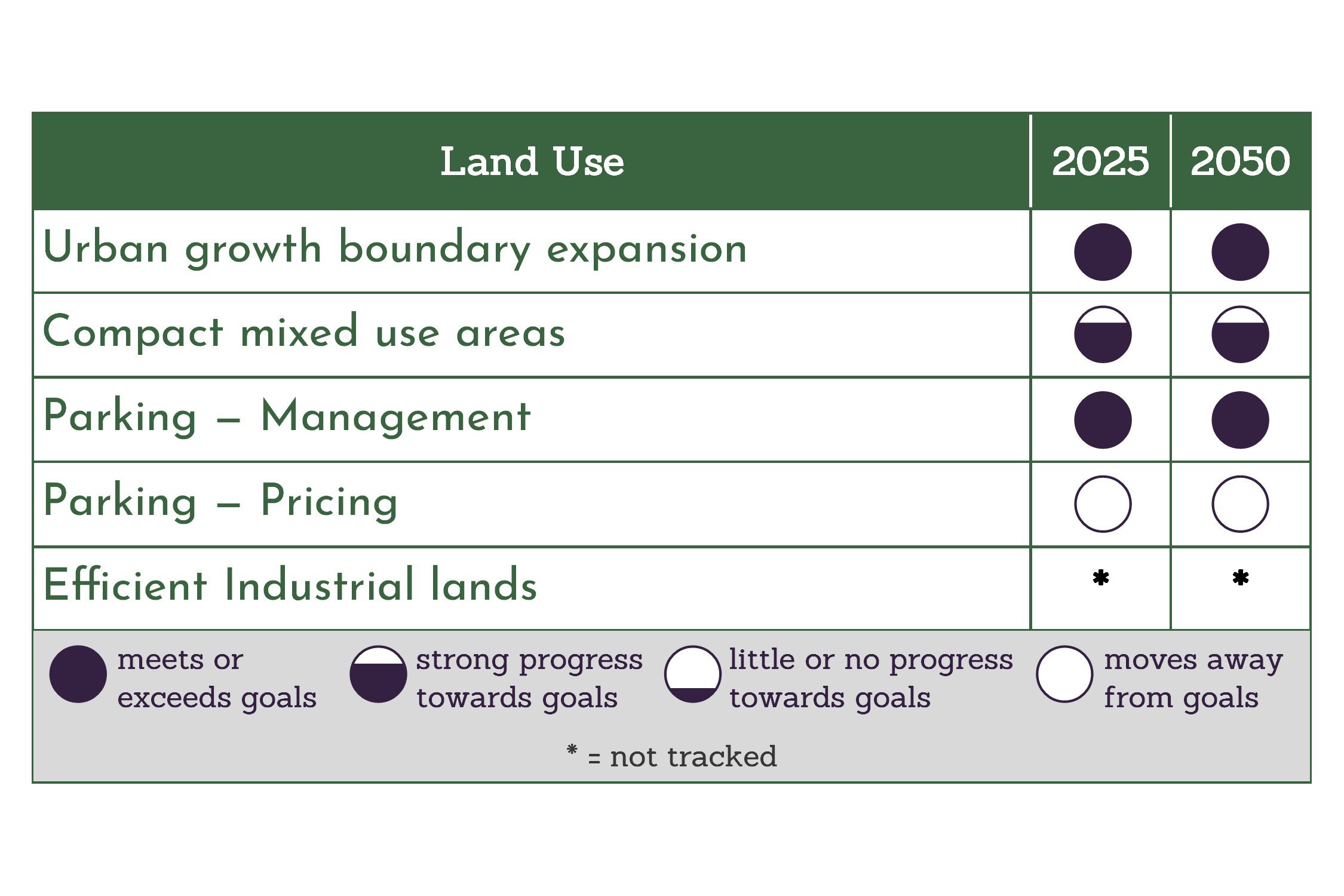
Land use refers to how and where communities develop.
Oregon uses a statewide framework combined with local community planning to guide land use and how communities develop.
Land use and transportation are closely linked. Land use decisions affect the distances between where people live, work and access services. Well-designed communities put everyday destinations closer to where people live, which makes it easier to travel using a lower emission means like public transit, biking, and walking or rolling. Land use decisions can also support efficient industrial lands that limit distances needed to move goods.
Progress snapshot
Urban growth boundary expansion
Oregon’s land use planning system has managed urban growth for decades, and current laws should keep metropolitan-area urban growth boundary expansions on track with the state’s population growth.
Compact mixed use areas
Changes to Oregon’s Transportation Planning Rules in 2022 will require Oregon’s eight metropolitan areas to plan for Climate Friendly Areas with increased density, mixed use, and multimodal transportation options.
Parking reform and management
Recent changes to Oregon’s Transportation Planning Rules require a reduction in parking mandates to free up land for housing and other services.
Efficient industrial lands
This category is not currently tracked. The Department of Land Conservation and Development is seeking ways to support business and communities with funding and technical assistance on best practices for industrial land use.
Explore each category below for a breakdown of our progress.
